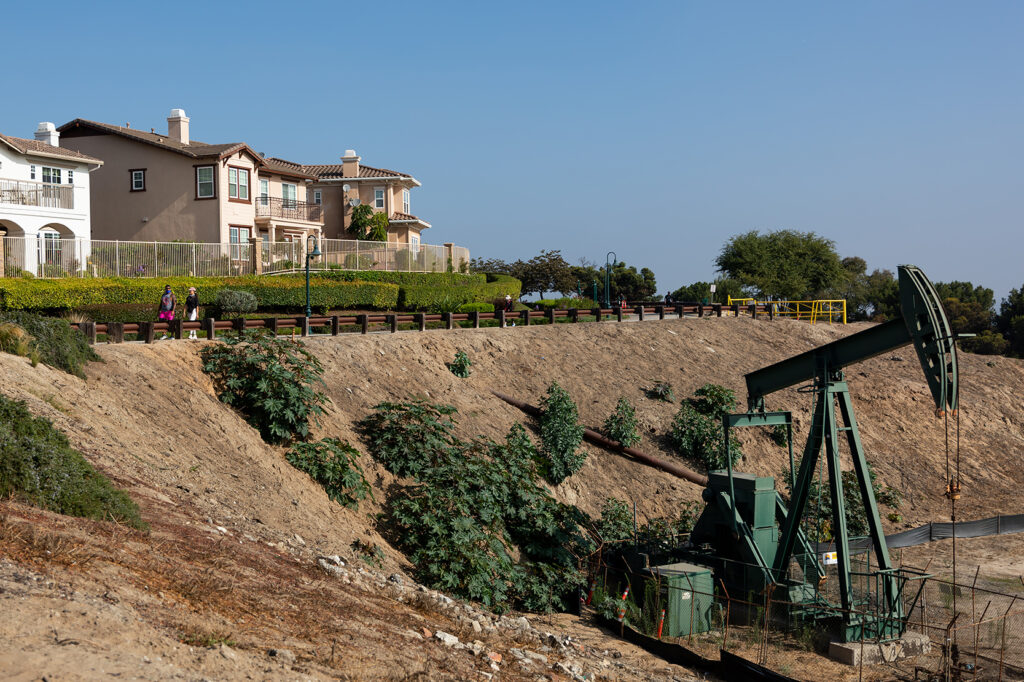
Looking out to the nearby marina from Playa del Rey’s neighborhood of hillside homes, one’s view is marred by a drab arrangement of industrial pipes and towering spires sprawling across the base of the hill. This assortment of industrial infrastructure nestled in the Ballona Wetlands houses a major hub of oil extraction and storage operated by Southern California Gas Co. It’s a gas storage facility that is only a few hundred feet from the doorsteps of multimillion-dollar houses, about a mile from Loyola Marymount University’s campus, and has been flagged as a site with potential to greatly impact residents and local ecosystems if a spill or leak ever occurs.
• Listen: Tara Pixley on L.A.’s oil fields in the LMU Magazine Off Press podcast.
“There was a time you could sit on the bluff and see drilling that went from the Playa del Rey oil field up through Venice,” says Jason Jarvis, associate professor of communications in the LMU College of Communication and Fine Arts who studies greenwashing.
Living in the shadow of oil infrastructure like this is a reality for many Angelenos.
Venice was a key location in the initial 1920s California black gold rush, but it was also the place where the toxic effects of oil became more apparent, according to Jarvis. He says, “The oil was so plentiful in Venice for a while they let it run down the street, and then it ended up polluting the canals.”
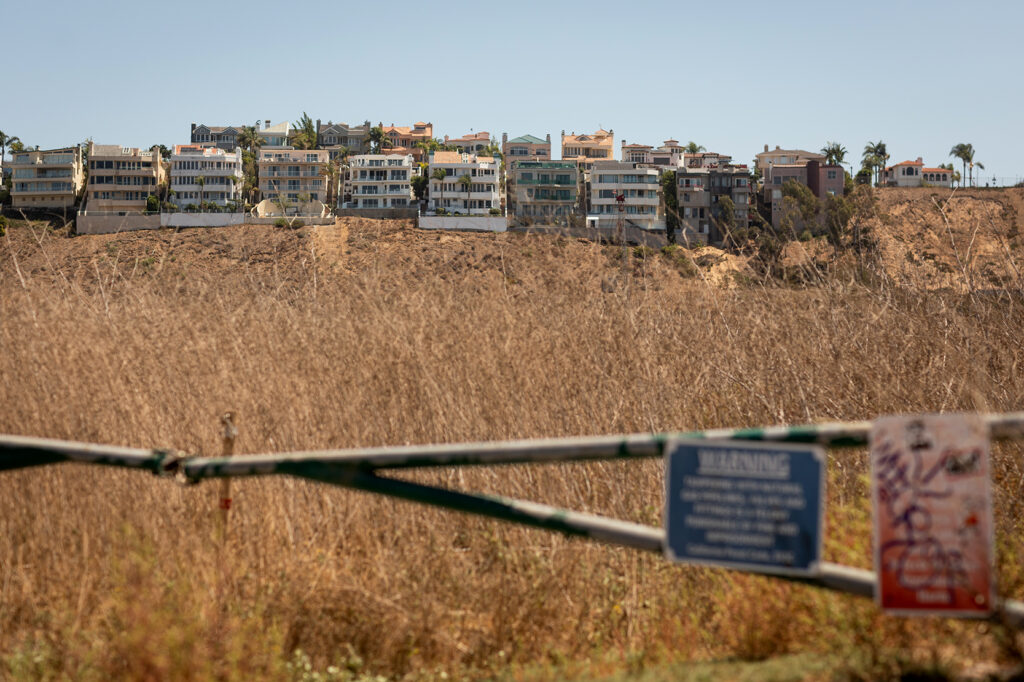
Living in the shadow of oil infrastructure like this is a reality for many Angelenos who are located on the largest urban oil field in the United States. Nearly three million Los Angeles residents live on 28 oil fields containing 3,000 active wells, many unaware of the noxious sites’ effects on their communities. Though oil extraction, storage and transportation facilities are located all over the city, it is primarily Black and brown areas such as Inglewood and Wilmington that have long borne the brunt of oil infrastructure’s health and environmental impacts.
A 2021 USC study published in the journal Environmental Research reported that the respiratory health of residents in South Los Angeles decreased in relation to their homes’ proximity to oil wells. All of the 961 community participants identified as people of color, and the study found that “participants near active oil development reported significantly higher prevalence of wheezing, eye and nose irritation, sore throat and dizziness.” Researchers also discovered that in some cases living near an oil well could negatively affect residents’ lungs more than living beside a highway or daily exposure to secondhand smoke.
These kinds of health impacts are reflected in the experiences of Wilmington residents such as Magali Sanchez-Hall and Luz Gomez, both of whom have spent years in the predominantly working class Latinx suburb of Los Angeles where the rotten egg smell of oil drilling and refining caused by hydrogen sulfide are a common occurrence. The Wilmington community is a place where oil tanks are housed behind a Boys and Girls Club, and where families in the area report their children experience higher rates of asthma, nosebleeds and headaches — all common effects of proximity to oil and natural gas processing.
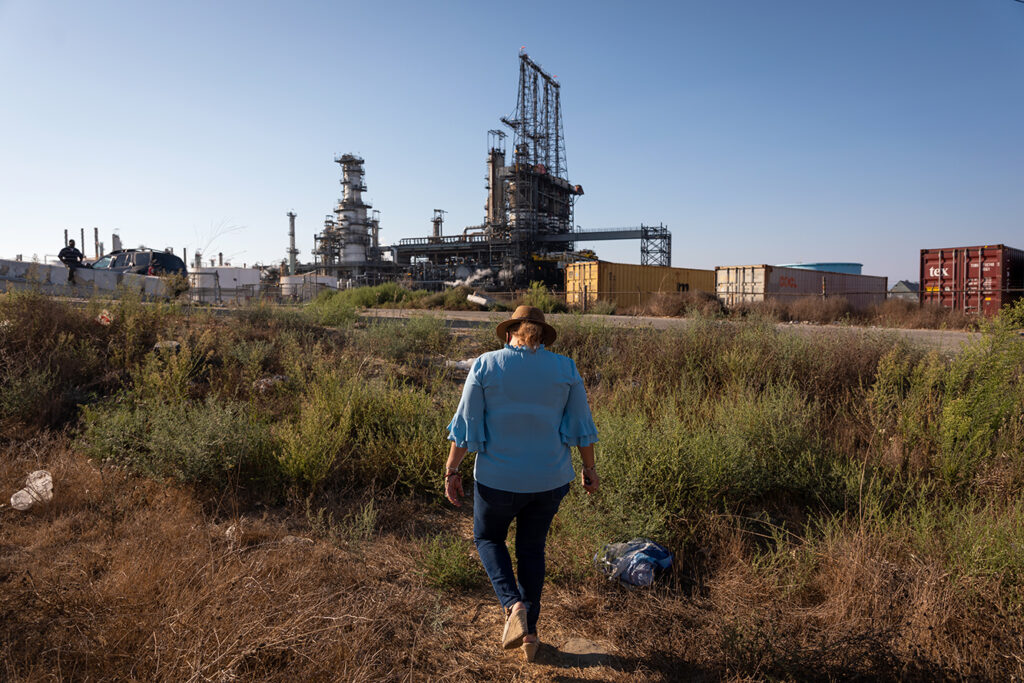
The cost of handling orphan wells is often laid at the feet of taxpayers.
Living near oil wells and refineries can cause a host of health problems, many of which we are only just now starting to understand. Researchers across the country have previously tied preterm birth to unconventional oil drilling practices such as fracking and, in 2020, a Stanford study found that pregnant women living close to conventional oil and gas wells also experienced premature births. Life near oil wells means dealing with daily air and water pollution as well as noise pollution that can cause ongoing psychosocial stress. It also means being at greater risk from environmental catastrophes like oil spills and earthquakes.
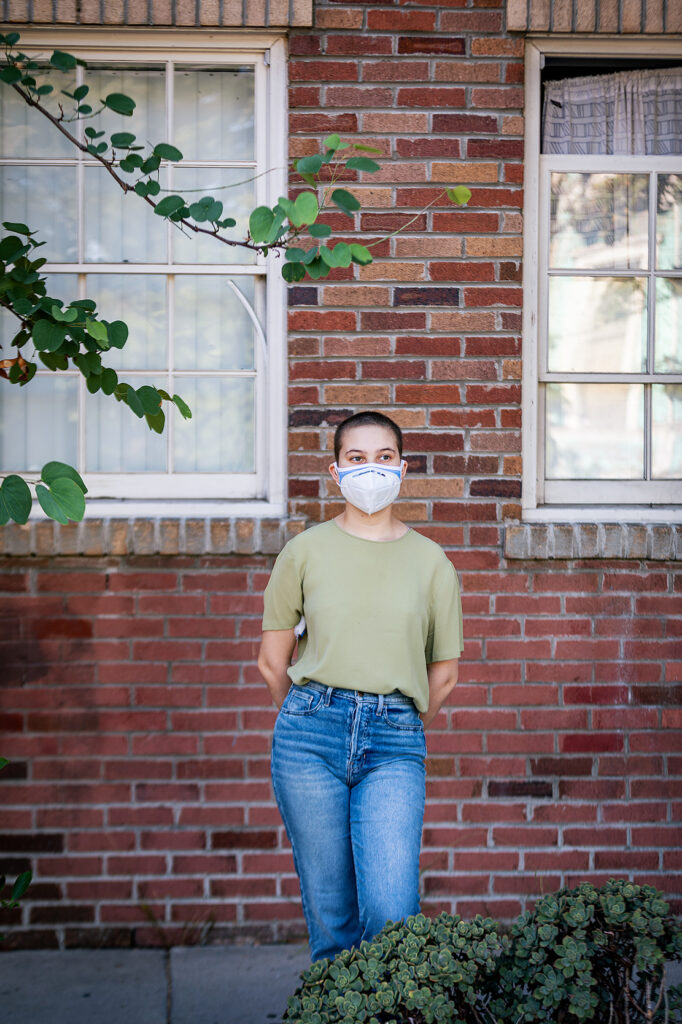
Fracking has long been known to cause minor earthquakes as part of the process to make the ground more permeable, but it is now known to also contribute to larger earthquakes. Oklahoma’s Supreme Court took steps in 2015 to recognize the complicity of oil companies when state residents suffered from increased earthquake activities and requisite damages. In a particularly earthquake-prone state such as California, this is a reasonable cause for additional concern.
Given evidence pointing to the toxic and pervasive impacts of California oil infrastructure on people and the natural environment, how has the practice continued? Jarvis points to one likelihood as “a cognitive dissonance with people thinking, ‘Well, it’s a nice neighborhood, there are some nice parks,’ etc.” He believes people who might not otherwise be willing to live next to awful things such as toxic oil wells turn a blind eye in the name of property values and other hard-won amenities in a city that is globally renowned for its sky-high cost of living. There’s also the fact that the city of L.A. has grown up around the many sites of oil drilling, and it’s been well-camouflaged in many areas, especially Westside communities and beach towns.
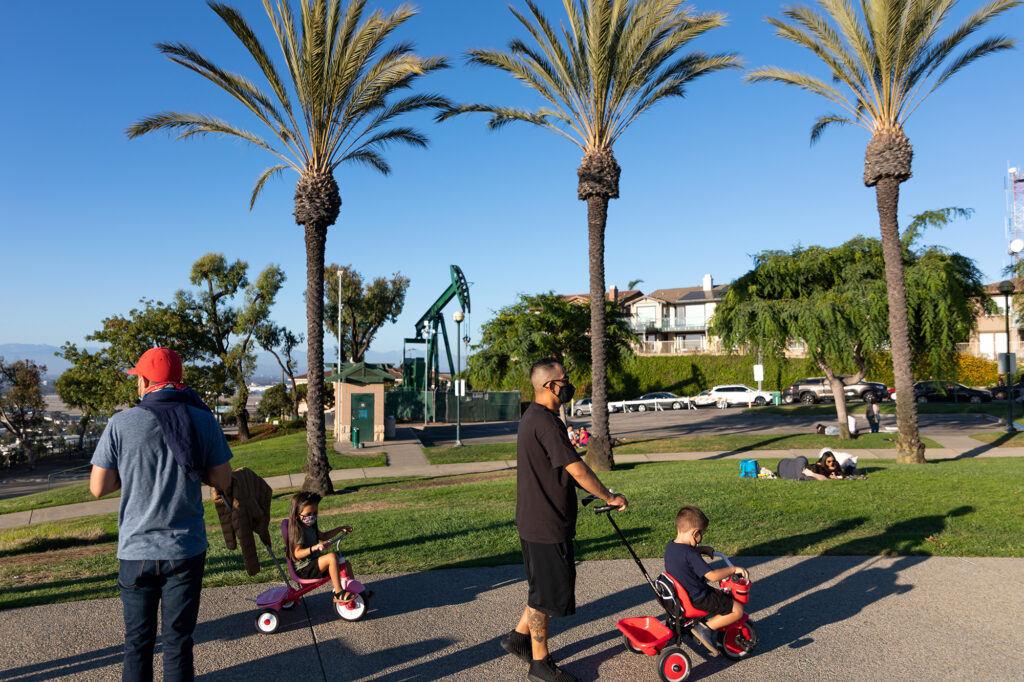
Enclaves of oil wells and individual derricks have been hidden behind high walls, made to look like office buildings, synagogues and one decorated with flowers (even as suspicious cancers cropped up in the shadow of that “Tower of Hope” once sited at Beverly Hills High School). In Long Beach, $10 million was spent to aestheticize four offshore drilling platforms made to look like tropical islands.
The money allocated to alleviate eyesores of drilling sites, however, does nothing to alter the impact of toxic chemicals released into the air and water. These decorative efforts that are unevenly applied across the city starkly underscore the environmental racism components of L.A. oil. Neighborhoods of wealthier, white residents seem to experience more closed and concealed wells while working-class communities of color are more likely to have ongoing, visible oil drilling.
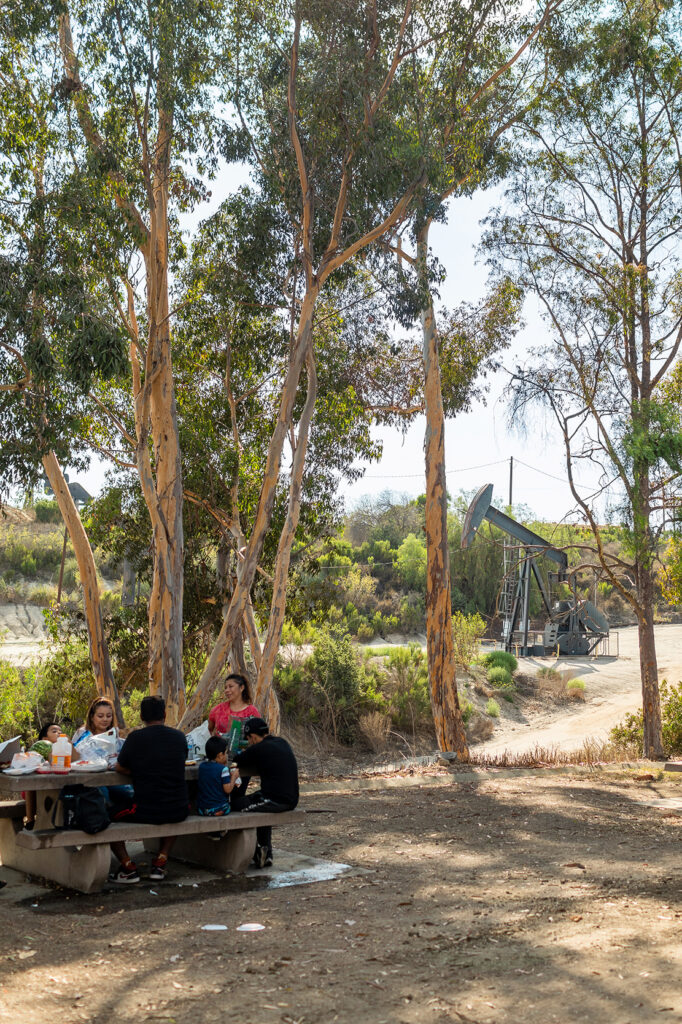
“In places where people have complained about it, they tend to camouflage, but that’s not true everywhere,” says Jarvis. “Long Beach harbor yes, Inglewood not so much.”
Alongside camouflaging efforts by oil companies, general lack of public awareness about drilling and refining makes it challenging to generate sustained public attention on this problem. However, there has been an uptick of interest in the last few years as communities push for California legislation that limits how close to homes oil companies can operate. In late 2021, a California law was passed that enacted some limitations on oil production in proximity to homes. The city of Los Angeles proposed its own outright ban on drilling in the city proper. While these policy-level moves are long-awaited gains in community fights against oil companies, they do little to address the underlying issue of capping and cleaning up orphaned wells, something experts say will be a major hurdle. Meeting the requirements of these laws entails closing and cleaning up around 5,200 wells across the state.
A central concern of orphan wells is that they are potentially hazardous to the water table as they generally leak toxic chemicals used in the oil production process, such as radioactive iodine. The California Department of Conservation’s last count of existing idle wells across the state was 35,000, and Jarvis says the state’s own estimate to decommission those wells is around $500 million. Since oil is not yet considered a pollutant under the environmental EPA cleanup superfunds, the cost of handling orphaned wells is often laid at the feet of taxpayers. Jarvis points to this as an indicator of just “how much Big Oil dictates how and what happens.”
While state and local politicians in California grapple with the likely long rollout of enacting laws aimed at ending oil drilling in the state, hundreds of hospitals, schools, and daycare centers remain in the shadow of oil wells. Angelenos living in the most oil-impacted areas like Wilmington, Inglewood and South L.A. continue to experience the ongoing (and as yet unknown) ramifications of living amidst toxic oil.
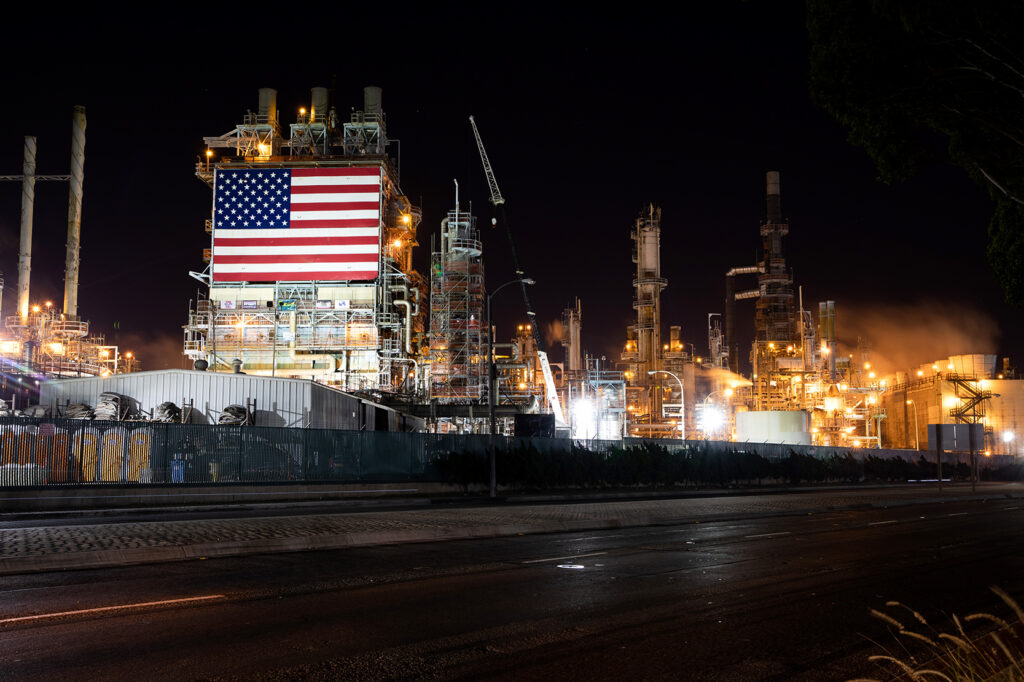
Tara Pixley is a photojournalist and a professor of visual journalism at LMU. In August 2022, she was named a Pulitzer Center Grantee with the Eyewitness Journalism Grant for her project on Southern California’s environmental justice issue of oil production. Follow her @tlpix.
